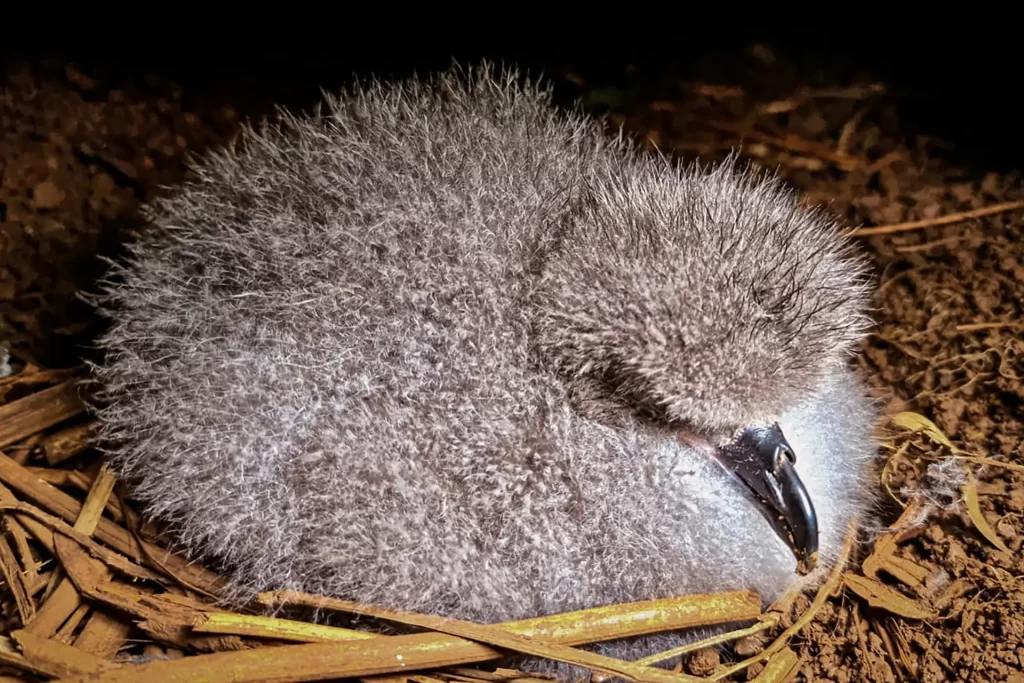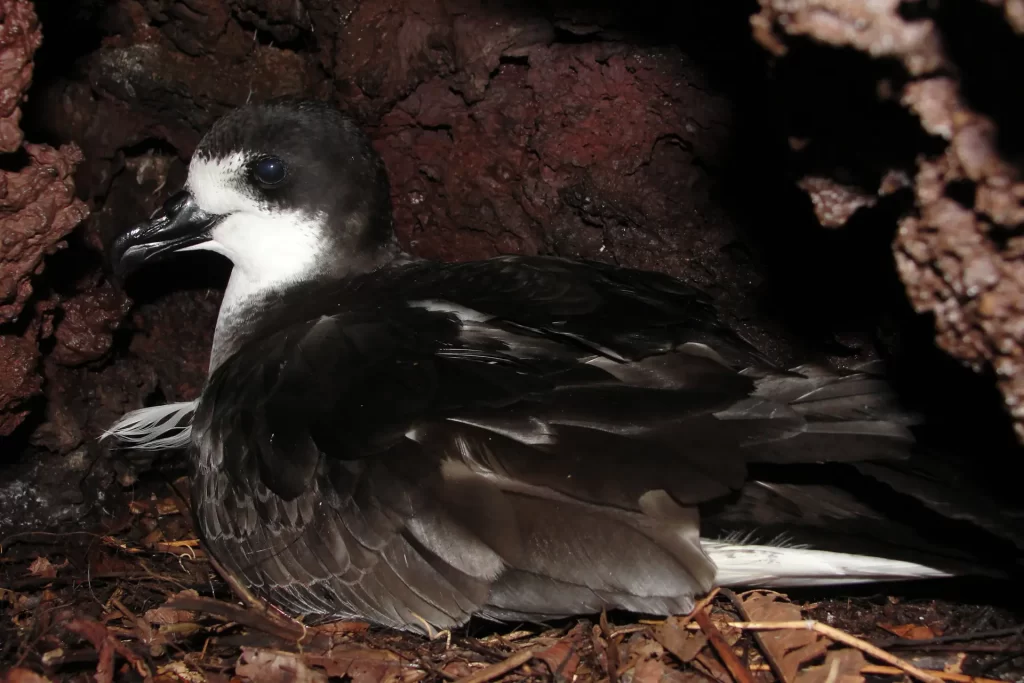The Galapagos Petrel is one of the six seabirds that are unique to Galapagos. The Galapagos Petrel spends most of its time at the sea, searching for small fish and invertebrates. It returns to land, however, to nest in burrows that it digs into the sides of the volcanoes. It is fascinating to watch their flight, which involves erratic turns and twists as they wing through the darkness towards their nests while calling loudly.
This iconic inhabitant of Galapagos skies, which nestled densely at the tops most of the volcanoes in the past, has been facing a growing danger in recent decades. Invasive species have caused a worrying decline in Galapagos Petrel abundance and distribution on the archipelago.
An Endangered Species

©Galápagos Conservancy
The nesting of this seabird is known to occur in the moist, higher-elevation zones on five islands, including San Cristobal and Isabela. Due to the reproductive isolation of each population, they are considered independent management units. This has led to distinct behavioral and morphological adaptations among petrels nesting in each island. All populations, despite their differences, share the same fate: Critically Endangered status, according to International Union for Conservation of Nature’s Red List of Terrorized Species.
Galapagos Petrel faces a variety of complex challenges. Invasion of non-native species – both flora & fauna – and human activities are the main culprits. The petrels are most affected by invasive plants such as the guava tree (Cinchonapubescens) and guava plant (Psidium Guajava). The plants are invasive and displace native species. They also create root networks which adult petrels can’t penetrate while excavating nesting burrows. The invasive blackberry, Rubus niveus, forms thorny network trapping petrels when they try to enter their nests or leave them.
Feral animals are known to prey upon chicks and eggs at various stages of development. Black rats also prey upon chicks and eggs. Even adult petrels can be hunted down by dogs, cats and pigs.
Cows, donkeys and horses grazing in the open trample petrel nests. Experts believe that petrels remain loyal to their nesting areas. The nesting burrows are used every year, so it is hard to replace any that have been destroyed. The nesting site faithfulness highlights the importance of protecting these seabirds’ natural habitats.
Project of Hope
Each threat is unique and poses a challenge to their survival. We can change the tide for the petrel by taking precise and effective conservation steps. Galapagos Conservancy recently partnered up with Galapagos National park Directorate with funding provided by the National Fish and Wildlife Foundation to implement an ambitious project for petrels on Santa Cruz and Santiago Islands.
Santa Cruz Island: Restoring Ecosystem
Santa Cruz Island, located in the middle of the Galapagos Archipelago is home to 759 nesting Petrels. Our team will work closely with Galapagos National Park Rangers in order to manage nesting habitat for petrels. Our primary task will be to remove invasive plants from the breeding colonies that are preventing the petrels from nesting. We will also attach GPS tracking tags to adult petrels in order to track them and their movements. This will give us valuable insight into their feeding, breeding, and resting behaviors.
Santiago Island: Recovering Lost Splendor
Santiago Island once housed the largest nesting population known of Galapagos Petrels. Its current status, however, is unknown because of a lack in monitoring and protection over the past decades. This project will revitalize the petrel monitoring program on Santiago Island, and identify management actions that are needed to assist this population in recovering.
Isabela Island: Uncover the Mystery
On the steep slopes of Sierra Negra, Isabela Island is home to a population that has never had its population status or needs well understood. This mystery is both a challenge and a chance for conservation of this unique specie. This project will be the start of a thorough research effort to determine what is happening to this unique population, and what it takes to protect them.
Call to Action
We can guarantee a future in which these magnificent birds will continue to soar across the Galapagos night sky with the help of international collaboration and community support. The conservation of the species will be impacted by management measures and decisions that are based on technical criteria. We appreciate our donors’ generosity in supporting our conservation efforts. The complex process to protect this species requires constant effort. In the fight to save the Galapagos Petrel, every action counts.

©DPNG



